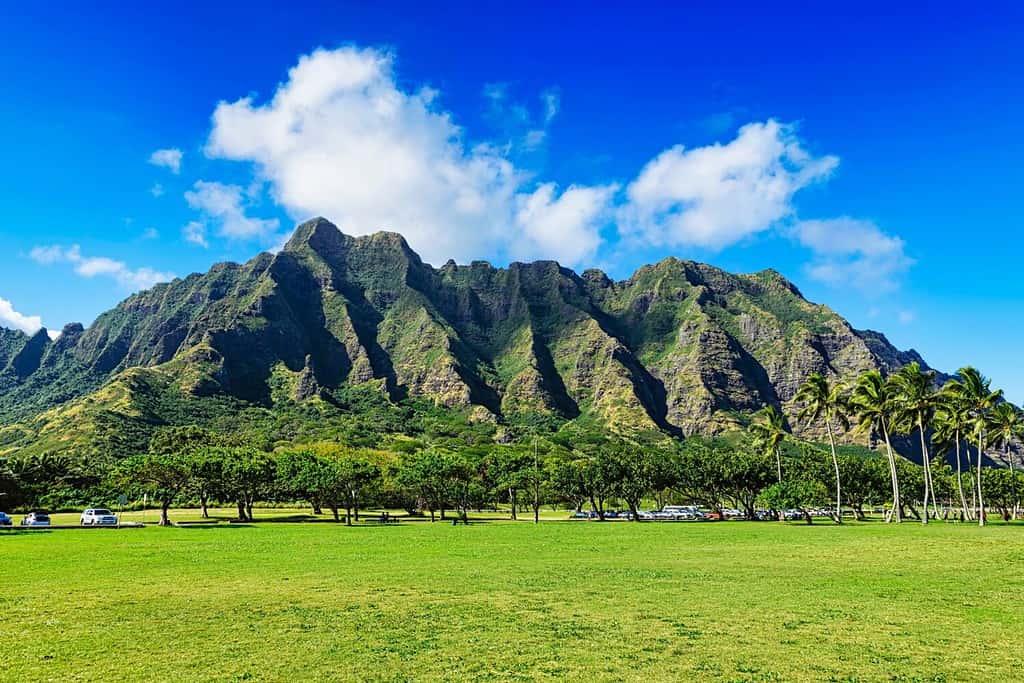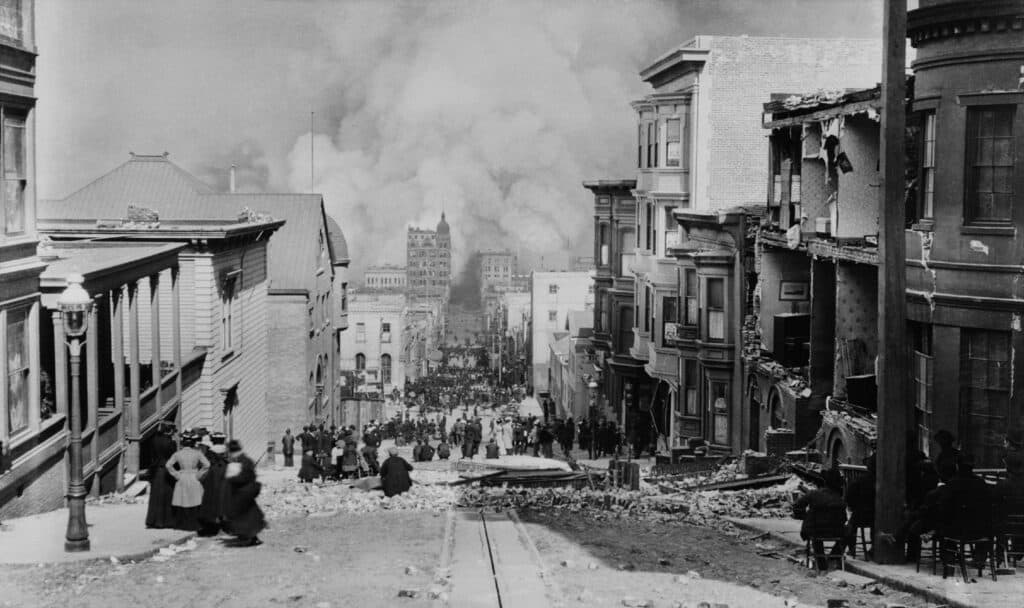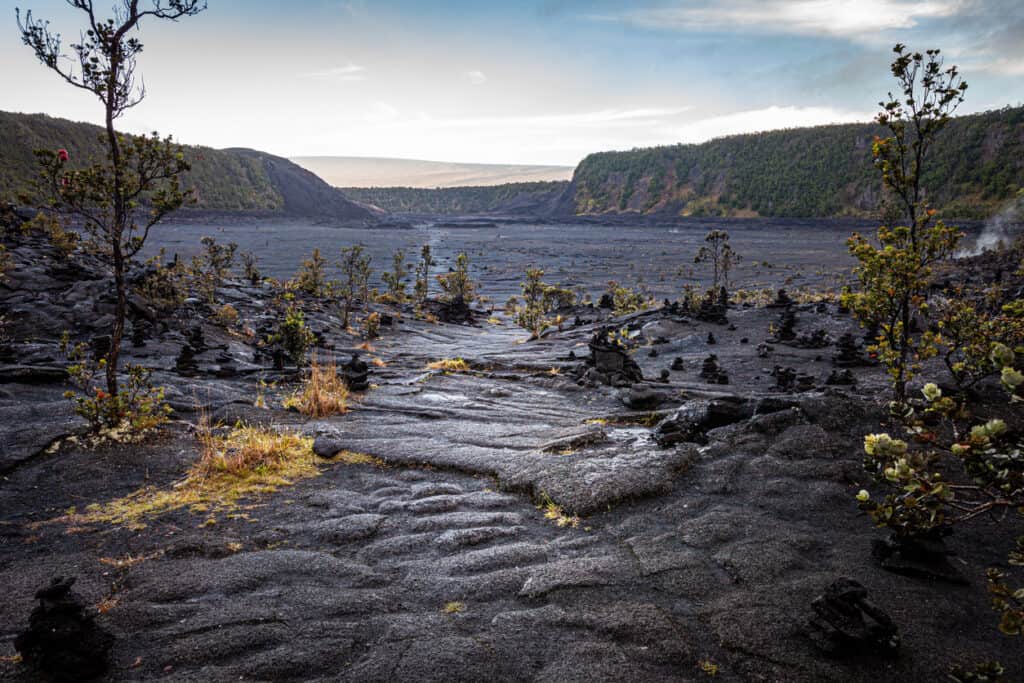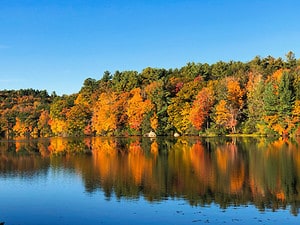Earthquakes are a natural phenomenon that both fascinate and frighten. A testament to the raw, unbridled power of our living planet, earthquakes occur when the Earth’s tectonic plates shift, releasing accumulated energy in the form of seismic waves. The state of Hawaii is no stranger to this, and the people in the Hawaiian towns know just how devastating they can be.
Earthquakes are not just geological events, though. They play a critical role in shaping our world, from forming vast mountain ranges to carving out deep ocean trenches. They also impact ecosystems and human societies, challenging both to adapt and survive in the face of change.
In the heart of the Pacific Ocean, the island paradise of Hawaii sits atop the Pacific Plate, near its boundary with the smaller Philippine Sea Plate. Unfortunately, this location places Hawaii in the Pacific Ring of Fire, an area notorious for its high seismic activity.
Today, we discover the Hawaiian town most likely to experience an earthquake. We’ll delve into its unique geological features, rich history, the life that thrives within and around it, and how all these elements coexist with frequent earthquakes.
The Place Most Likely to Experience an Earthquake in Hawaii

Although Hawaii is a beautiful place, it can be scary when it comes to earthquake risks!
©kdreams/Shutterstock.com
With an Earthquake Index of 432.77, Hawaii Volcanoes National Park is the place most likely to experience an earthquake in Hawaii. Here, the Earth never quite stays still. Towering volcanoes dominate the landscape, and a diverse range of wildlife flourishes. This isn’t an ordinary national park.
Hawaii Volcanoes National Park sits prominently on Hawaii’s Big Island, nestled in the Pacific’s core. Its position on the Ring of Fire, one of the world’s most earthquake-prone regions, ensures a near-constant dance of the Earth beneath it. The park’s lively seismic activity is further emphasized by being home to Kīlauea and Mauna Loa, two of the most active volcanoes on the planet. Located on the Island of Hawaii, its closest town is Hilo.
But this dynamic landscape isn’t uninhabited. Rather, a variety of wildlife and vibrant human communities have made this their home, adapting to the frequent tremors and the ever-changing landscape.
What the Index Means in Comparison with California

It is important to note that the earthquake index is just a measure of the seismic hazard in an area.
©MD_Photography/Shutterstock.com
Let’s break this down a bit more, shall we? An Earthquake Index is a number that helps predict how prone an area is to experience earthquakes. Higher numbers indicate a higher probability of seismic activity. But what does that mean for a place like Hawaii Volcanoes National Park or for the Hawaiian towns nearby? A whole lot of trembling.
Rock and Roll in the Park
Hawaii Volcanoes National Park has an Earthquake Index of a jaw-dropping 432.77. That’s like an all-you-can-shake buffet! This number suggests that the park is a center stage for seismic activity, mainly due to its restless volcanoes. Should you ever visit the park, the probability of there being an earthquake is higher than normal.
Comparative Shakedown: The California Case

People looking at damaged buildings after the 1906 earthquake in San Francisco, CA.
©Everett Collection/Shutterstock.com
But how does this number compare to other earthquake-prone areas and towns? First, let’s take a little detour to California, a state known for its shaky reputation. Surprisingly, California’s Earthquake Index comes in at 21.80, a far cry from our park’s score. This tells us that even though California is known for its tremors, our park in Hawaii tops it on the seismic scale.
Putting Things into Perspective: Hawaii’s Overall Seismic Activity
Let’s widen our lens a bit and take a look at the entire state of Hawaii. The overall Earthquake Index for Hawaii is 13.37, quite a bit lower than our park’s score. So, while the entire state does get its share of ground-shaking, Hawaii Volcanoes National Park takes the prize as the most earthquake-prone area.
Decoding the Earthquake Index
What is the takeaway here? First, these numbers show us that when it comes to seismic activity, Hawaii Volcanoes National Park isn’t just part of the conversation; it’s the main topic.
Its high level of seismic activity makes the park a dream come true for scientists and geologists and an exciting destination for anyone interested in nature’s powerful forces.
History of Hawaii Volcanoes National Park
It’s time to go back to the roots of Hawaii Volcanoes National Park. This park is more than just a hot spot of geological activity—it’s steeped in rich history, too.
Let’s turn back the pages and delve into the thrilling past of this magnificent place.
From Sacred Ground to National Treasure

Kilauea Iki Trail in Hawaii Volcanoes National Park—a popular hiking destination.
©iStock.com/VezzaniPhotography
Long before it became a national park, this area held deep spiritual significance for the Native Hawaiians. Within the boundaries of the park reside Kilauea and Mauna Loa, recognized globally for their volcanic activity. To the native Hawaiian population, these aren’t merely geological formations; they are revered as the dwelling place of Pele, the indigenous deity associated with fire and volcanoes.
Fast forward to 1916, when the U.S. government recognizes the unique value of these fiery landscapes. Making its grand entrance, we have Hawaii Volcanoes National Park, one of the earliest national parks established in the U.S. Since its inception, it has been stunning visitors with its spectacular volcanic exhibitions.
A World Heritage Site: Earning Global Recognition
The world began to take notice of this unique park, and in 1987, the United Nations declared Hawaii Volcanoes National Park a World Heritage Site. This global recognition highlighted not only the park’s natural wonders but also its cultural importance.
Through Thick and Thin: Surviving Mother Nature’s Fury
Being a park centered around active volcanoes, it’s seen its share of drama. Eruptions and earthquakes have been part of the park’s journey, occasionally leading to closures and challenges. Yet, each time, the park has bounced back, showing the same resilience as the island chain it calls home.
The Legacy Lives On
Today, Hawaii Volcanoes National Park continues to be a treasure trove of geological wonders and cultural history. It’s a testament to the power of Mother Nature, a living connection to ancient Hawaiian culture, and a place of scientific discovery. It’s seen a lot in its century-long journey as a national park, but one thing’s for sure—its story is far from over.
Population in the Vicinity of Hawaii Volcanoes National Park

Breathtaking view of Mauna Loa volcano on the Big Island of Hawaii.
©MNStudio/Shutterstock.com
Welcome to the neighborhood surrounding Hawaii Volcanoes National Park! Here, the locals have a front-row seat to some of the most exciting geological activities on Earth. Who exactly are these adventurous inhabitants?
Living at the Edge
The Big Island of Hawaii, where the park is located, is home to a population of around 200,000 people living in lovely Hawaiian towns. Among this vibrant community, a significant number of individuals and families have chosen to live within the proximity of the park.
The Census-designated Place (CDP) of Volcano, situated near the park’s entrance, has a population of about 2,500 residents.
Population Growth
While the population around the park may seem small compared to urban standards, it’s growing. From 2000 to 2020, the CDP of Volcano experienced a growth rate of approximately 20%. It’s clear that the allure of living in Hawaiian towns amidst such unique geological phenomena is attracting more and more people to the area.
Living with the Giants: Adapting to Geological Activities
Life in these Hawaiian towns near an active volcano requires a certain level of preparedness and resilience. The local communities are well-versed in safety measures and have strong emergency response strategies in place. As a result, the residents are not just surviving in this dynamic environment; they’re thriving.
Community Resilience: Banding Together
The Hawaiian towns and communities surrounding the park share a bond like no other. Together, they navigate the unique challenges of living with geological activity, strengthening their sense of unity. It’s this shared experience that makes their community spirit as powerful as the forces they live with every day.
Wildlife in Hawaii Volcanoes National Park
Let’s venture into the wild side of Hawaii Volcanoes National Park. Here, amidst the rumbling ground and volcanic Hawaiian landscapes, a diverse array of wildlife has found a way to thrive. But it’s not just the humans who call this park home!
Birds in the Park

The nene, or Hawaiian goose, is one of the most fascinating residents of Hawaii Volcanoes National Park.
©Wunson/Shutterstock.com
First up, let’s look skyward. The park is a paradise for bird watchers, hosting about 60 different species of birds. Many of these species are endemic to Hawaii, meaning they can’t be found anywhere else in the world. The Hawaiian goose, the state bird of Hawaii, is one of these unique residents. Conservation efforts in the park have helped increase its population, making it a common sight during your park visit and if you visit nearby towns.
Insects and Invertebrates
Next, let’s meet the smaller inhabitants. The park is home to countless insects and invertebrates, many of which are, like our bird friends, endemic to Hawaii. Among these are the happy-faced spiders, known for their cheerful markings, and the carnivorous caterpillars that have adapted to life in these unique conditions.
Land Dwellers

Although native to Puerto Rico, the coqui was introduced to Hawaii in the late 1980s, by being imported on nursery plants.
©Jeremy A. Casado/Shutterstock.com
On the mammalian front, you’ll find a handful of species, including feral pigs, goats, and small Asian mongooses. While not native, they’ve certainly made themselves at home here.
The park also hosts several species of reptiles and amphibians, with the Hawaiian coqui frog making its voice heard loud and clear in the evenings in this magical place.
Marine Life

Hawaiian monk seals are an endangered species.
©iStock.com/leightrail
Last but certainly not least, let’s not forget the marine life. The park’s coastal areas are a haven for creatures like the endangered hawksbill turtle and the playful Hawaiian monk seal. These coastal regions teem with life, offering a stark contrast to the park’s fiery inland.
Wildlife Adaptation
The wildlife in Hawaii Volcanoes National Park is a testament to the adaptability of nature. These creatures have not only survived in these challenging conditions of earthquakes, tsunamis, and volcanic eruptions, but they’ve also thrived, each finding their unique place in the park’s ecosystems. They are a vibrant and vital part of what makes this park a unique natural wonder.
An Eco-Paradise: Importance of Wildlife Conservation
This rich diversity of Hawaiian wildlife underscores the park’s significance as an ecological haven. Efforts to protect and conserve these species are ongoing, ensuring that this park remains a sanctuary for its unique and wonderful wildlife. As we explore further into the park’s geological wonders, let’s remember and respect these fellow inhabitants who share this amazing place with us.
Key Takeaways
As we conclude this exploration, it’s clear that Hawaii Volcanoes National Park is more than just a park. It’s a living, breathing testament to the power and majesty of our planet. Nestled in the heart of the Pacific, this park encapsulates the volatile beauty of Mother Earth with its rumbling grounds and smoking volcanoes.
Its inhabitants in nearby Hawaiian towns don’t merely endure this vibrant landscape but embrace it. The park’s diverse wildlife and the surrounding human communities have become adept at living amidst the tremors, turning these geological challenges into opportunities. Their resilience illuminates the adaptive power of life, teaching us valuable lessons about survival and coexistence.
Moreover, the park’s seismic activity doesn’t isolate it. Rather, it has turned it into a hub of scientific discovery and a magnet for tourists. People from all corners of the globe flock to experience its unique attractions, from the smoking Kīlauea and Mauna Loa volcanoes to the diverse wildlife that calls this place home.
In the face of such formidable natural forces, the persistence of life within the park is nothing short of awe-inspiring. The story of Hawaii Volcanoes National Park is one of power, resilience, and life’s enduring spirit. It’s a story that shakes, rumbles, and roars—just like the land itself.
The photo featured at the top of this post is © iStock.com/hapabapa
Thank you for reading! Have some feedback for us? Contact the AZ Animals editorial team.






